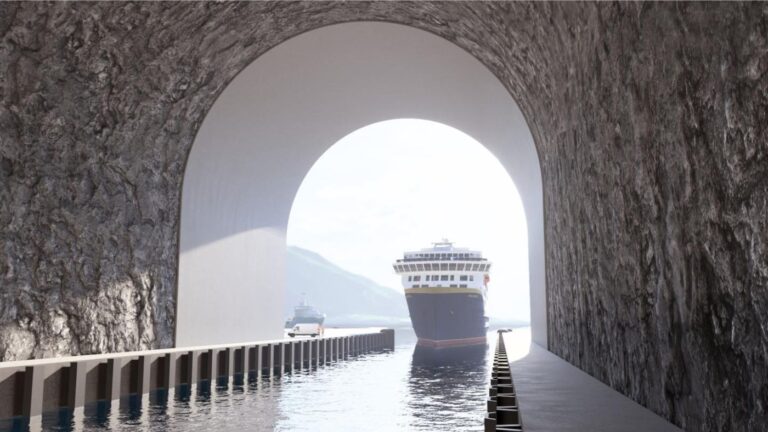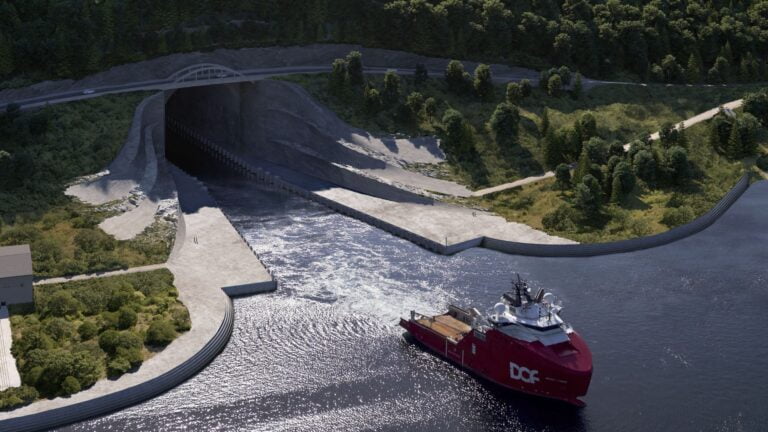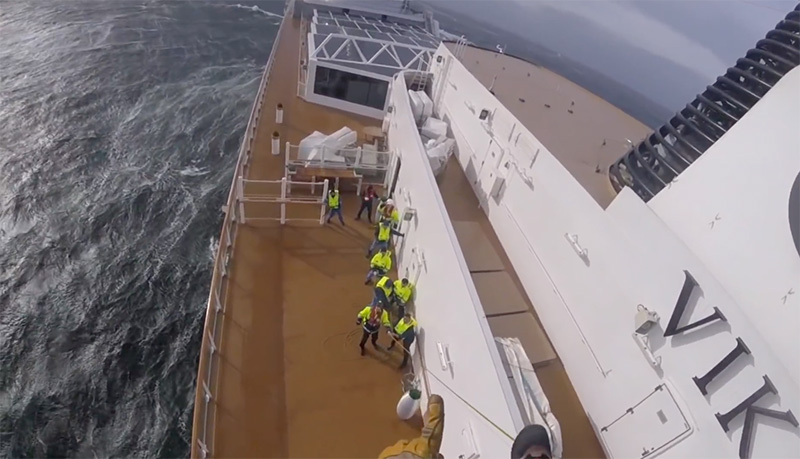The world’s first full-scale ship tunnel, planned for Norway’s exposed Stad peninsula, is once again in jeopardy.
New cost estimates suggest the ambitious project will far exceed its approved budget, raising questions about whether it will ever be built.

The Stad Ship Tunnel has long been touted as a groundbreaking piece of maritime infrastructure. The 1.7-kilometre passageway would allow vessels to bypass the storm-battered seas off Stad, one of the most dangerous stretches of Norway’s coastline.
Here, powerful cross-currents and shifting winds create unpredictable wave patterns that can last for days after a storm.
It was off Stad in 2019 that the Viking Sky cruise ship lost power in heavy seas and narrowly avoided disaster, an incident that underlined just how treacherous this stretch of ocean can be.
But this month, the Norwegian Coastal Administration (Kystverket) confirmed that the tunnel cannot be built within the NOK 5 billion framework previously approved by parliament.
While the exact figure is not yet public due to ongoing contractor negotiations, officials admit the price tag is likely to be significantly higher.
“It’s now or never,” said Kystverket director Einar Vik Arset, emphasising that the project’s future depends on the political response.
Government Hesitant
The government has so far declined to confirm whether it will continue to back the tunnel.

State Secretary Kristina Hansen from the Ministry of Trade, Industry and Fisheries said the higher cost estimates must be weighed against other priorities in the upcoming national budget.
The matter will now be sent back to parliament, where politicians will have to decide if the project still represents value for money.
Political Reactions
According to NRK, most parties remain supportive of the tunnel in principle, but with caveats.
The Progress Party (Frp) insists its starting point is that the tunnel must be built, but deputy leader Terje Søviknes said the new figures demand a fresh cost-benefit analysis.
The Conservative Party (Høyre) echoed this cautious support, with fisheries spokesperson Olve Grotle saying they are willing to “stretch far” but stopped short of promising full backing at any price.
The Centre Party (Sp), long one of the tunnel’s strongest champions, criticised the Labour Party (Ap) for remaining silent on the matter. “It is worrying how quiet they are,” said MP Erling Sande.

Meanwhile, the Green Party (MDG) reiterated its outright opposition. “This is reckless waste of taxpayer money,” said Marius Dalin, calling for investments in local roads instead.
Millions Already Spent
More than NOK 290 million has already been spent on planning, property purchases, and preparatory work for the tunnel, while surrounding municipalities have invested an additional NOK 100 million.
Local leaders argue the project is vital for safety and economic development, particularly for the fisheries and aquaculture industries that often face weather-related delays when navigating Stad.
When bad weather closes the sea route, fish deliveries are postponed, leading to reduced quality and lost income. For a region so dependent on seafood and maritime services, the tunnel is seen as an essential piece of infrastructure rather than a luxury.
The mayors of Stad, Vanylven and Kinn issued a joint statement urging the government not to abandon what they call their region’s future.
They argue that without the tunnel, young people will continue to move away and business investment will remain limited, while with it the region could build new tourism opportunities around what would be the world’s first ship tunnel.
What Happens Next
The Coastal Administration is awaiting permission to enter final price negotiations with contractors, but the Ministry has yet to grant approval.
Construction was originally due to begin in 2025, with hopes of an opening around 2030. For now, the future of the world’s first ship tunnel remains highly uncertain.

